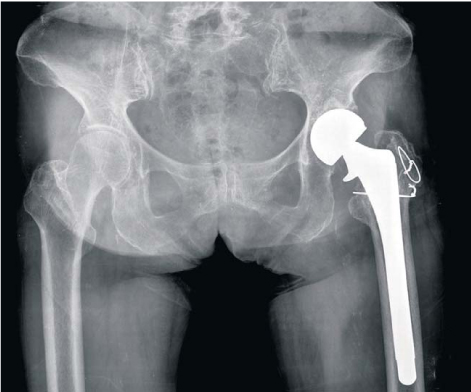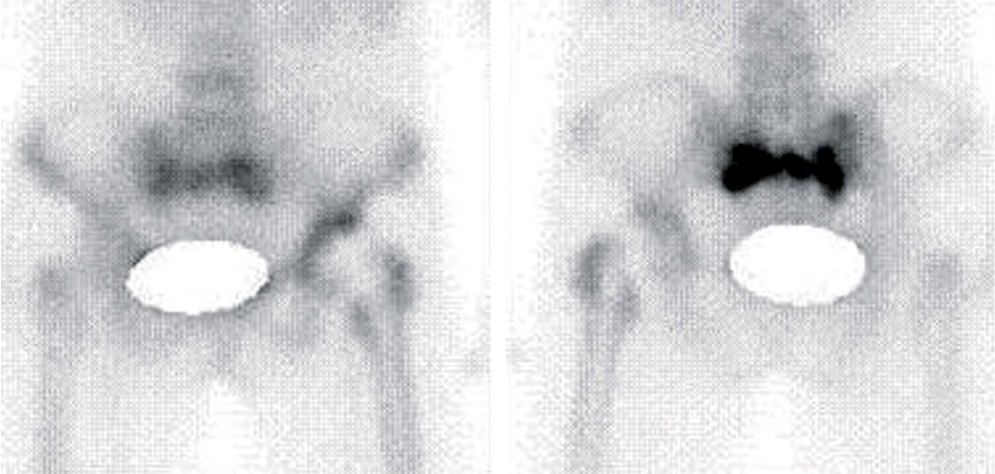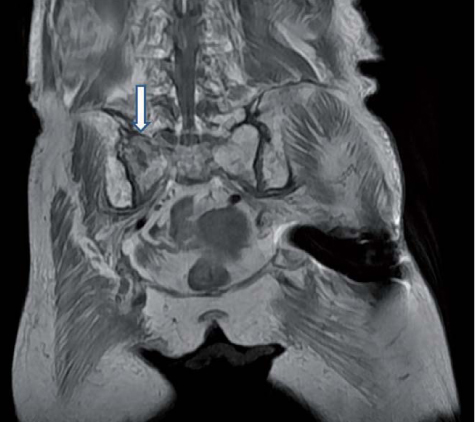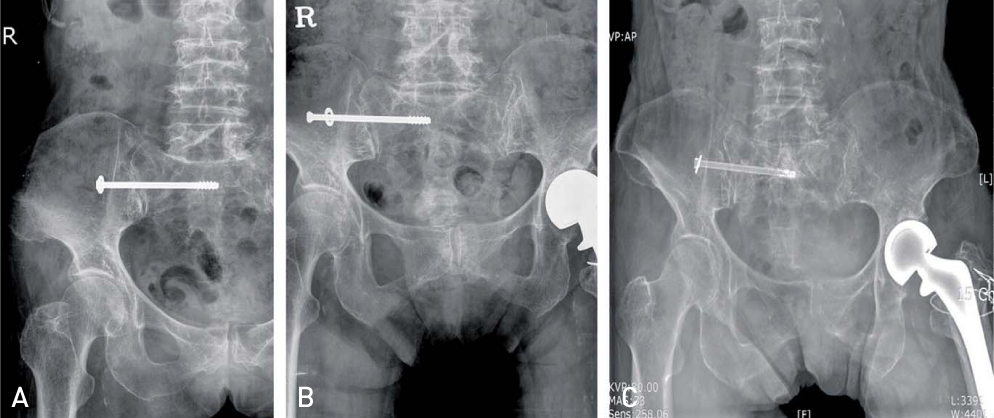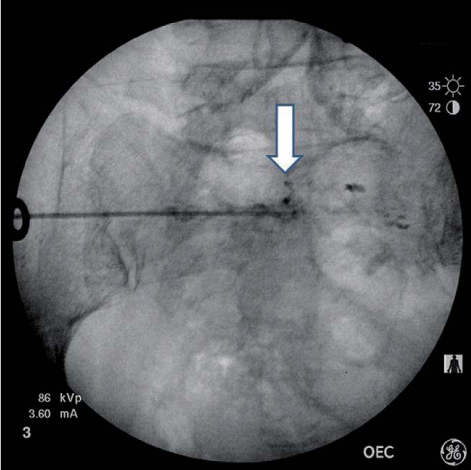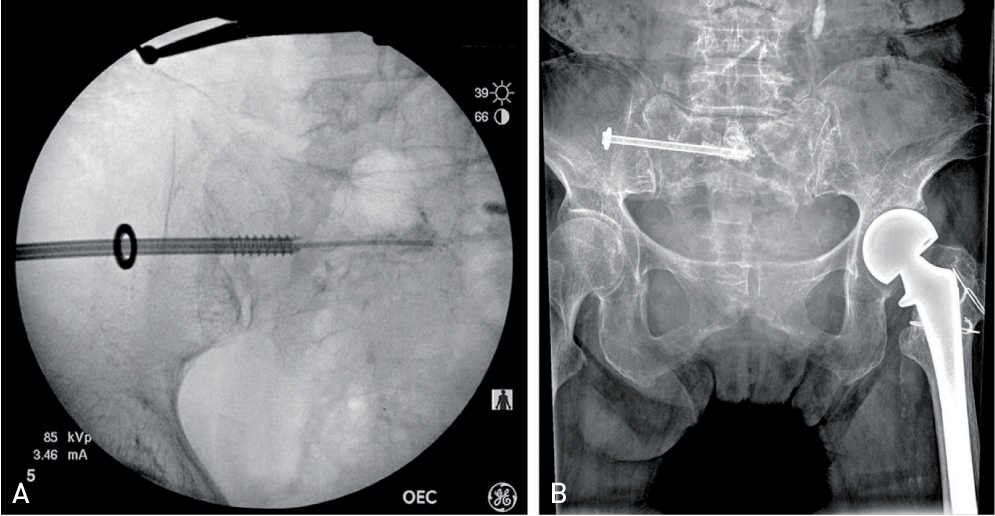Hip Pelvis.
2013 Dec;25(4):306-310. 10.5371/hp.2013.25.4.306.
Percutaneous Iliosacral Screw Fixation with Cement Augmentation in Sacral Insufficient Fracture: A Case Report
- Affiliations
-
- 1Department of Orthopaedic Surgery, Kwangju Christian Hospital, Gwangju, Korea. paedic@chol.com
- KMID: 1808141
- DOI: http://doi.org/10.5371/hp.2013.25.4.306
Abstract
- Sacral insufficiency fractures (SIFs) are no longer a rare type of fracture in the elderly. To date, SIFs have typically been treated conservatively. Sacroplasty has recently been used in treatment of SIFs, with a good result. In order to solve the problems of sacroplasty, the authors performed a new surgical technique, percutaneous iliosacral screw fixation with cement augmentation, for SIFs. Secure fixation of the screw in osteoporotic bone was achieved and biological bone union was obtained. We present this case with a review of the literature.
MeSH Terms
Figure
Reference
-
1. Gotis-Graham I, McGuigan L, Diamond T, et al. Sacral insufficiency fractures in the elderly. J Bone Joint Surg Br. 1994; 76:882–886.
Article2. Wild A, Jaeger M, Haak H, Mehdian SH. Sacral insufficiency fracture, an unsuspected cause of low-back pain in elderly women. Arch Orthop Trauma Surg. 2002; 122:58–60.
Article3. Bayley E, Srinivas S, Boszczyk BM. Clinical outcomes of sacroplasty in sacral insufficiency fractures: a review of the literature. Eur Spine J. 2009; 18:1266–1271.
Article4. Choi KM, Song JH, Ahn SK, Choi HC. Therapeutic considerations of percutaneous sacroplasty for the sacral insufficiency fracture. J Korean Neurosurg Soc. 2010; 47:58–63.
Article5. Ries T. Detection of osteoporotic sacral fractures with radionuclides. Radiology. 1983; 146:783–785.
Article6. Grangier C, Garcia J, Howarth NR, May M, Rossier P. Role of MRI in the diagnosis of insufficiency fractures of the sacrum and acetabular roof. Skeletal Radiol. 1997; 26:517–524.
Article7. Whitlow CT, Yazdani SK, Reedy ML, Kaminsky SE, Berry JL, Morris PP. Investigating sacroplasty: technical considerations and finite element analysis of polymethylmethacrylate infusion into cadaveric sacrum. AJNR Am J Neuroradiol. 2007; 28:1036–1041.
Article8. Tjardes T, Paffrath T, Baethis H, et al. Computer assisted percutaneous placement of augmented iliosacral screws: a reasonable alternative to sacroplasty. Spine (Phila Pa 1976). 2008; 33:1497–1500.
Article9. Carlson GD, Abitbol JJ, Anderson DR, et al. Screw fixation in the human sacrum. An in vitro study of the biomechanics of fixation. Spine (Phila Pa 1976). 1992; 17:S196–S203.10. Park MS, Suh DJ, Park JH. The Effects of cement augmentation in the intertrochanteric fracture of the femur treated with sliding hip screw device for senile osteoporotic patients. J Korean Hip Soc. 2004; 16:428–434.
- Full Text Links
- Actions
-
Cited
- CITED
-
- Close
- Share
- Similar articles
-
- Percutaneous Iliosacral Screw Fixation with Cement Augmentation in Osteoporotic Sacral Fracture
- Superior Gluteal Artery Injury during Percutaneous Iliosacral Screw Fixation: A Case Report
- Spino-Pelvic Fixation in Unstable Sacral Fracture: A Case Report
- Biomechanical Study of Posterior Pelvic Fixations in Vertically Unstable Sacral Fractures: An Alternative to Triangular Osteosynthesis
- Treatment of Unstable Sacral Fractures Related to Spino-Pelvic Dissociations

